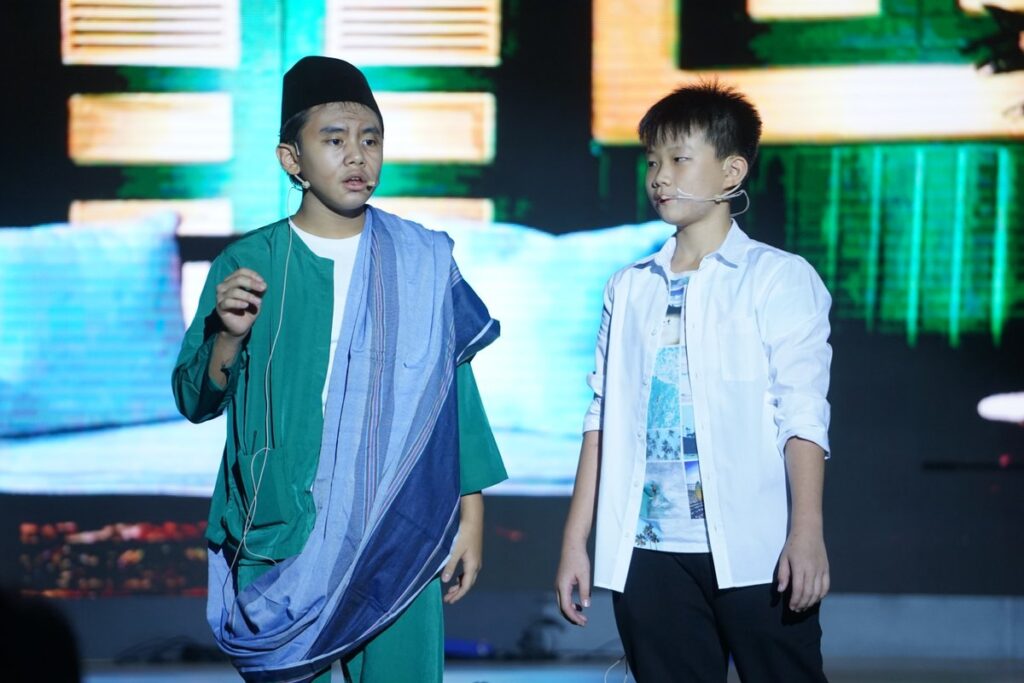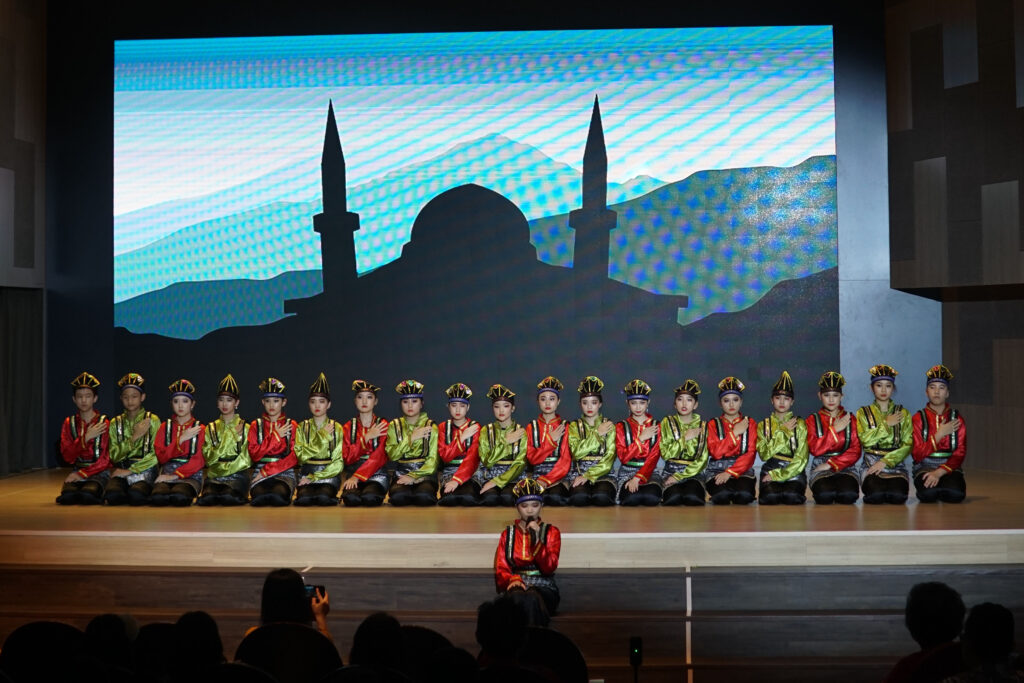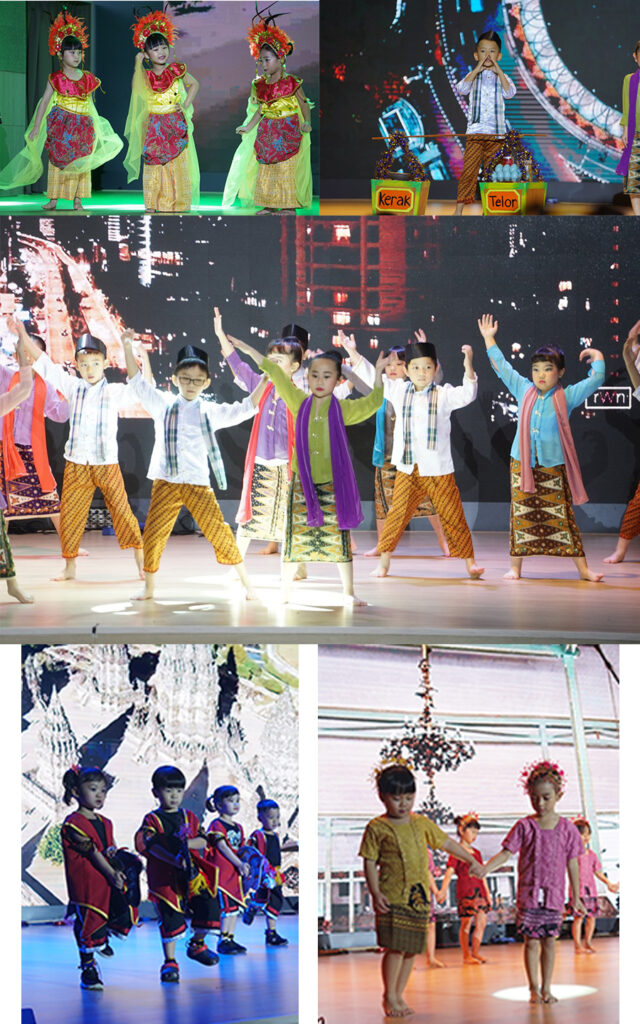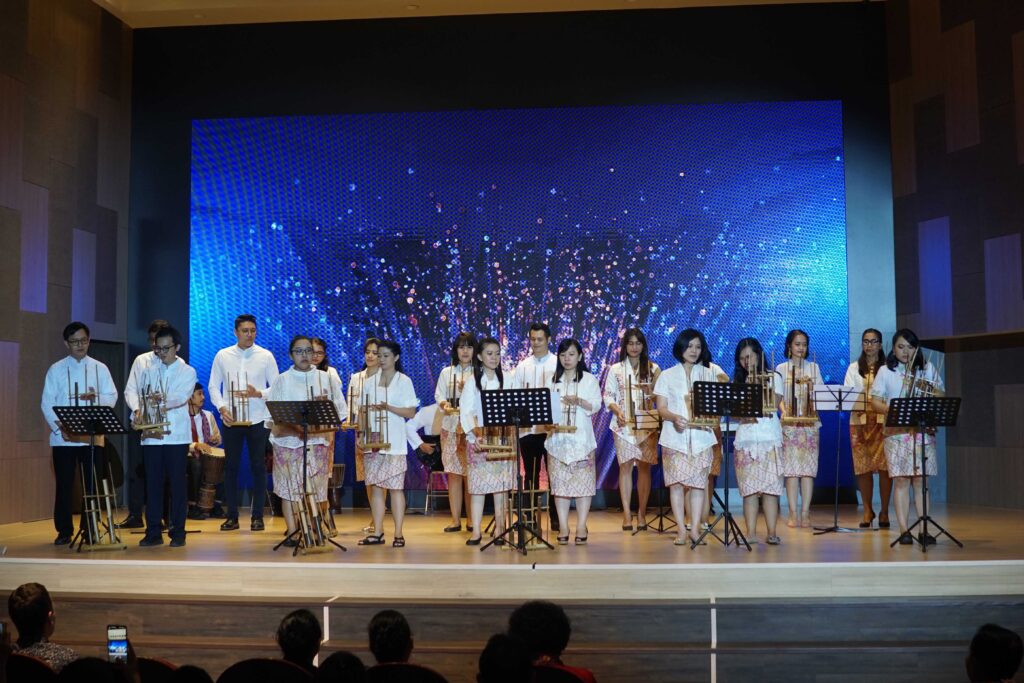A Tribute to the Living Heritage of Indonesia
There is a long history of interaction between our Indonesian indigenous customs and multiple foreign influences that has shaped Indonesia as we know it today. As result, this diverse culture has become the signature element that people both locals and foreigners see as Indonesia. As time goes by though with modernisation and the influence from outside there is the fear our unique and valuable traditions will fade away. Springfield is very aware of these changes and wants the younger generation to know more about the culture, customs and tradition of that make up this beautiful country they call home. With this in mind ‘Indonesiaku’ became the means by which Springfield could share in a fun and entertaining way with both teachers, students and parents an event that would highlight and showcase in a special way the beauty of Indonesia’s cultural traditions.
“Indonesiaku” Performances
Indonesiaku took place at Springfield School PB3 Campus, on Friday 21 February 2020, with two performances. Each performance was almost one and a half hours long, with 200 Springfield students and teachers taking part and with more than 550 people attended both performances.
Indonesiaku was a presentation of traditional dances and music including the traditional costumes from several of the larger regions in Indonesia such as Sumatra, Java, Bali, Kalimantan, Sulawesi, Papua, East and West Nusa Tenggara. The traditional dances performed were Sajojo, Yamko Rambe Yamko, Apuse, Merak, Belibis, Ondel-ondel, Burung Enggang, Gemu Famire and all performed by the Springfield students and community, from Nursery to Secondary grades.
 To tie the dances, music and culture together in one performance a narrative was developed between a grandfather and his grandson with the grandfather explaining that Indonesia has so much to offer from the corner of Aceh right through to Papua. The characters of grandfather and grandson were played by two secondary students, Jordan Daniswara and Ralphael Kusnoatmaja.
To tie the dances, music and culture together in one performance a narrative was developed between a grandfather and his grandson with the grandfather explaining that Indonesia has so much to offer from the corner of Aceh right through to Papua. The characters of grandfather and grandson were played by two secondary students, Jordan Daniswara and Ralphael Kusnoatmaja.
The conversations between the two generations was triggered when the grandfather told the grandson he had explored Indonesia in an early life. The grandfather mentioned that he has seen such a variety of different cultures with their various buildings, dances and songs as he had travelled around the islands of Indonesia. The grandson then wanted to know all that his grandfather has seen and discovered. The grandfather talked about the different cultures and explained the history that led to the dancing performances which helped bring all the various student performances together as one presentation. The two characters played the role well, keeping the attention of the audience with their colloquial dialogue and educative massages such as Bhinneka Tunggal Ika, the meaning of Kuda Lumping dance to the Cublak-cublak Suweng tradition including the history of Seudati and Saman dances. The grandfather and grandson included daily jokes and poems that also helped engage the audience in a fun way.
Dance after dance were performed beautifully, from the Kampuang Nan Jauh di Mato from Sumatra, the Sik Sik Sibatumanikam dance to Tari Merak, Manuk Dadali, Ondel-ondel, Belibis, and the Apuse dance from Papua. The students performed the dances with youthful energy making the traditional art forms attractive and enjoyable for all who watched.
Seudati and Saman Dance
One of the epic performances was the Seudati and Saman dance. This dance from Aceh had 19 students as performers. It was one of the longest performances of over 5 minutes duration and one of the most complex with a wide range of different choreography involved.
The dance itself led by a singer that sang Acehnese poems required the full concentration of all involved. The dance commenced with slow swaying movements at first which grew faster and faster towards the end. It involved a high level of difficulty on the technical side with the dancers having to be well synchronized with each other for the dance to be performed successfully. The dancers all did very well with the dance being outstanding in its presentation.

All performers executed the Seudati and Saman dance with such high presision that the audience was left in awe. It was breathtaking to see the perfection of the choreography that drew the attention of the whole audience.
 Early Years Performances
Early Years Performances
Nursery and Kindergarten students also took to the stage with a performance of the Indonesian traditional dances of Kuda Lumping, Cublak-cublak Suweng, and Manuk Dadali. They delivered these dances in adorable and confident style.
In the Cublak-cublak Suweng dance, the little performers did not only dance but also demonstrated Cublak-cublak Suweng, which is a traditional game originating in Java. The performers played Cublak-cublak Suweng as the music started, with one person becoming Pak Empo and others being the players that took turns giving out the stone while Pak Empo had to guess who held the stone. After this, the performers continued to dance portraying how traditional Javanese children gathered and played together back in times of old.
These students were definitely adorable and performed so well that they left everyone with huge smiles on their faces.
Angklung Performance
Indonesiaku was not just a night for students, the teachers also took part bringing the beautiful Angklung, a traditional musical instrument made from bamboo to life once again. The Angklung performers, 27 teachers in total played five songs.
The songs were Bungong Jeumpa, Sinanggar Tulo, Bengawan Solo, Ondel-Ondel and Yamko Rambe Yamko. The players created a unique harmony of peaceful melody.
The Angklung used by the teachers has been recognised as a Masterpiece of the Oral and Intangible Heritage of Humanity by UNESCO on 18 November 2018. The Angklung is a unique traditional musical instrument where 1 Angklung only produces 1 note, with a song only be played collaboratively by several players. Amazing really!
As a finale, following the teacher’s performance all performers were invited back on stage, celebrating an epic show as a tribute to their Indonesian culture. The Indonesiaku event demonstrated the wonderful work of the teachers and students after seven months of preparation and practice.;
We are proud that we were able to bring the diverse culture of Indonesia into this Indonesiaku event and thank those who attended helping make this event such a success. And going on this performance you won’t want to miss the next event that is run by Springfield School!

